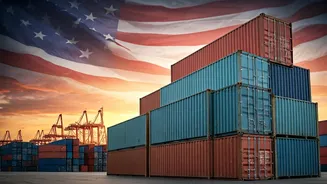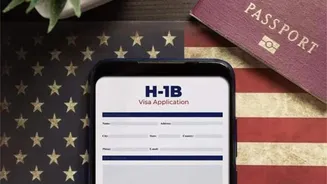H-1B Visa Program
The H-1B visa program allows U.S. employers to temporarily employ foreign workers in specialized occupations that require theoretical or technical expertise.
The program has been a subject of ongoing scrutiny, with some critics suggesting it has led to displacement of American workers or wage depression. Specific critiques center around the alleged exploitation of the program, with concerns of companies using it to hire lower-paid foreign workers, thus undermining the prospects of domestic job seekers. There's also discussion regarding the impact on technological advancement and innovation, where the supporters of the program often highlight its benefits in bringing skilled talent and expertise into the country. The debate includes how the program is administered, its potential impact on wages and employment for American workers, and what reforms, if any, could be implemented to address the concerns of both sides.
Criticism and Concerns
Criticisms surrounding the H-1B program and the broader topic of immigration often cite economic impacts. Opponents argue that the influx of foreign workers can negatively affect the job market, particularly for American workers in specific sectors. Some sources express concerns that the program might be abused, with companies allegedly prioritizing lower-paid foreign workers over domestic candidates, thus driving down wages and creating an unfair labor environment. The focus has often been on industries like technology and engineering, which have seen a surge in H-1B visa applications. Discussions frequently touch upon wage stagnation and the displacement of qualified American workers. The accusations often stem from situations where companies are said to lay off American workers and then replace them with H-1B visa holders, causing hardship for American workers. These negative viewpoints are often accompanied by arguments about the need to protect American jobs and prioritize the economic well-being of the native-born workforce.
Impact on Indian Workers
The discourse around H-1B visas and immigration has specific implications for Indian workers. The H-1B program is frequently used by Indian professionals seeking opportunities in the U.S., particularly in tech and IT sectors. The program represents a pathway to professional advancement and higher earning potential for many. The discussions often revolve around the challenges and opportunities faced by Indian workers, like the difficulty of securing visas and the competition in the job market. There are also concerns over how the visa system can affect families and the long-term prospects of Indians in the country. Many Indian immigrants actively contribute to the U.S. economy, forming a critical part of the workforce and significantly impacting the economy. The challenges include navigating a complex legal system and adapting to a different work environment, and these are all part of the conversation surrounding Indian workers in the U.S.
Perspectives and Reactions
The perspectives on the H-1B visa program are varied and complex, involving politicians, workers, and organizations with differing views. Some politicians might support tightening regulations, reflecting concerns about protecting American jobs, while others advocate for policies that make it easier for skilled immigrants to come to the U.S. to bolster the economy and drive innovation. Some worker advocacy groups might express apprehensions about the potential displacement of American workers, while professional organizations within the tech sector might underline the importance of the H-1B program in filling crucial skill gaps. The public's reactions are influenced by various factors, including media coverage, economic conditions, and personal experiences. Different voices add layers to the conversation, bringing unique experiences to the debate and highlighting the broad scope of opinions on the issue of Indian workers in the U.S.















